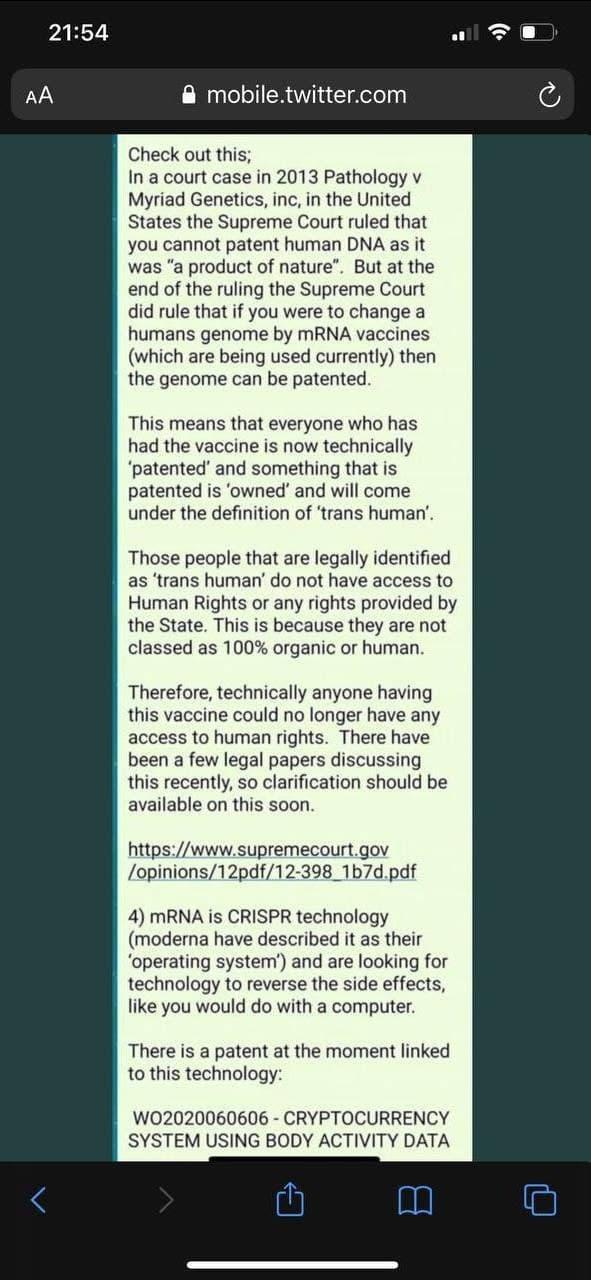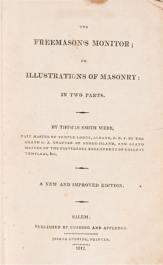The Lost Symbols of Freemasonry: The Beehive
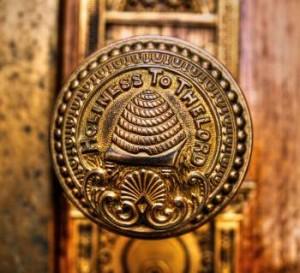 The beehive is a very old Masonic symbol that is still used in many countries, but in England and Wales it was dropped after the Union of 1813. It can still be seen however in some older pre-Union lodges, for example it is displayed as a symbol on the 3rd Degree Tracing Board of the Royal Cumberland Lodge No.41 in Bath, but to all purposes it has been lost as a symbol under the United Grand Lodge of England.
The beehive is a very old Masonic symbol that is still used in many countries, but in England and Wales it was dropped after the Union of 1813. It can still be seen however in some older pre-Union lodges, for example it is displayed as a symbol on the 3rd Degree Tracing Board of the Royal Cumberland Lodge No.41 in Bath, but to all purposes it has been lost as a symbol under the United Grand Lodge of England.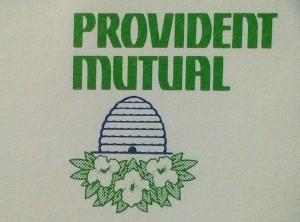 industry and the bees the workers. The Roman writer Porphyry, in his work De antro nympharum (The Cave of the Nymphs), tells us that in the Roman rites of Mithra, honey from a honeycomb was poured over the initiate during the Leo (Lion) ritual while he was admonished to avoid all that which is unclean in the world. The Church of the Latter Day Saints also adopted the symbol and it may be featured in the Book of Mormon, when it states that the Jaredites carried “with them Deseret, which, by interpretation, is a honey bee” (Ether 2:3).
industry and the bees the workers. The Roman writer Porphyry, in his work De antro nympharum (The Cave of the Nymphs), tells us that in the Roman rites of Mithra, honey from a honeycomb was poured over the initiate during the Leo (Lion) ritual while he was admonished to avoid all that which is unclean in the world. The Church of the Latter Day Saints also adopted the symbol and it may be featured in the Book of Mormon, when it states that the Jaredites carried “with them Deseret, which, by interpretation, is a honey bee” (Ether 2:3).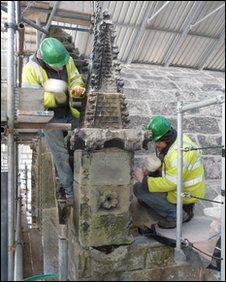 A beehive was discovered at Rosslyn Chapel during the recent renovations. It was inside a rooftop pinnacle that had been hollowed-out by the masons for this purpose. The bees entered through a hole in a decorative flower on the pinnacle. It is interesting in that its construction did not allow for the extraction of honey. The sole purpose appears to have been to protect the bees from the bad weather of the region.
A beehive was discovered at Rosslyn Chapel during the recent renovations. It was inside a rooftop pinnacle that had been hollowed-out by the masons for this purpose. The bees entered through a hole in a decorative flower on the pinnacle. It is interesting in that its construction did not allow for the extraction of honey. The sole purpose appears to have been to protect the bees from the bad weather of the region.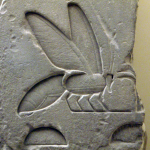 “A bee has in all Ages and Nations been the Grand Hierogliphick of Masonry, because it excells all other living Creatures in the Contrivance and Commodiousness of its Habitation or combe; … nay Masonry or Building seems to be of the very Essence or Nature of the Bee, for her Building not the ordinary Way of all other living Creatures, is the Generative Cause which produces the Young ones….”
“A bee has in all Ages and Nations been the Grand Hierogliphick of Masonry, because it excells all other living Creatures in the Contrivance and Commodiousness of its Habitation or combe; … nay Masonry or Building seems to be of the very Essence or Nature of the Bee, for her Building not the ordinary Way of all other living Creatures, is the Generative Cause which produces the Young ones….”Creatures that by a rule in nature teach
The art of order to a peopled kingdom.”
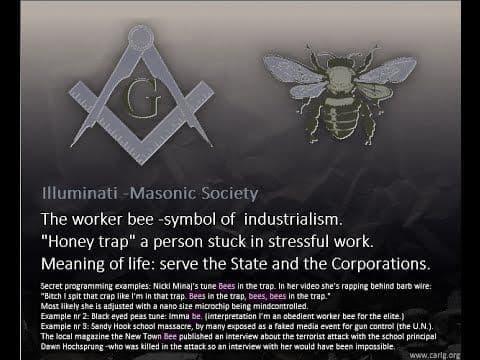

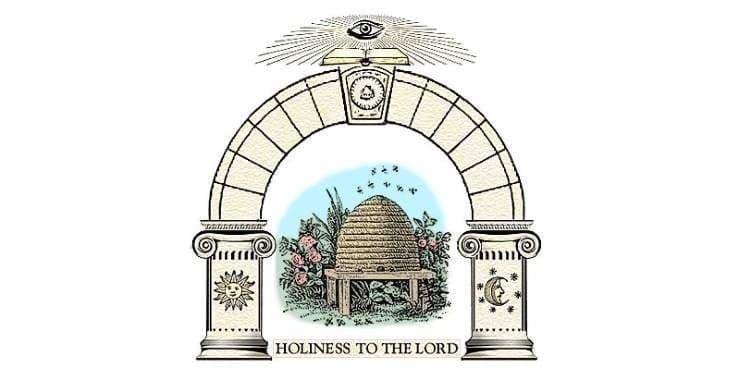
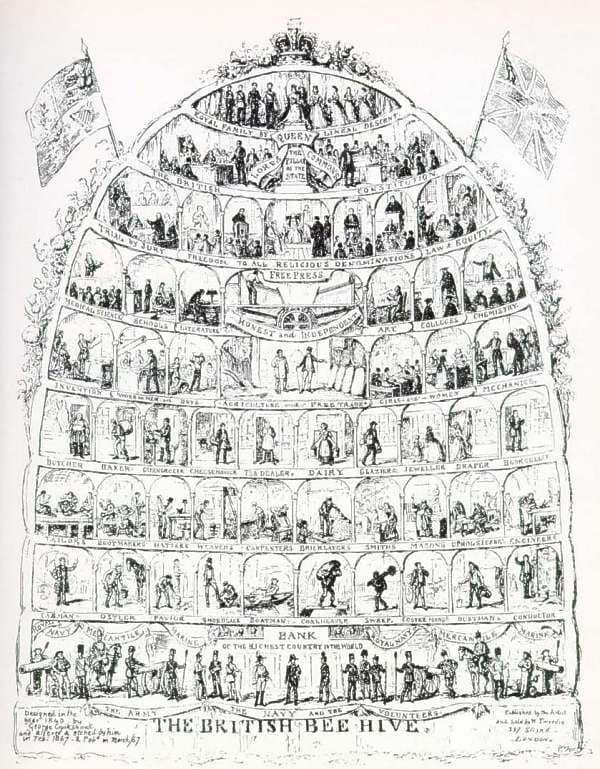
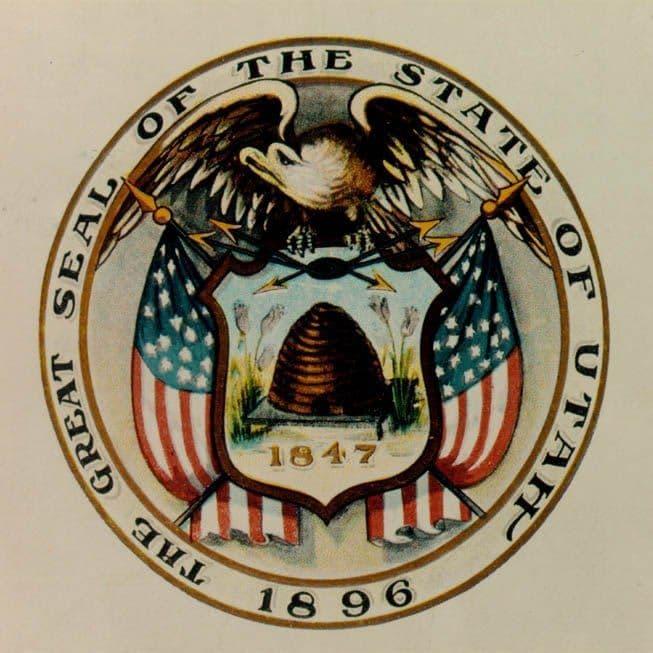
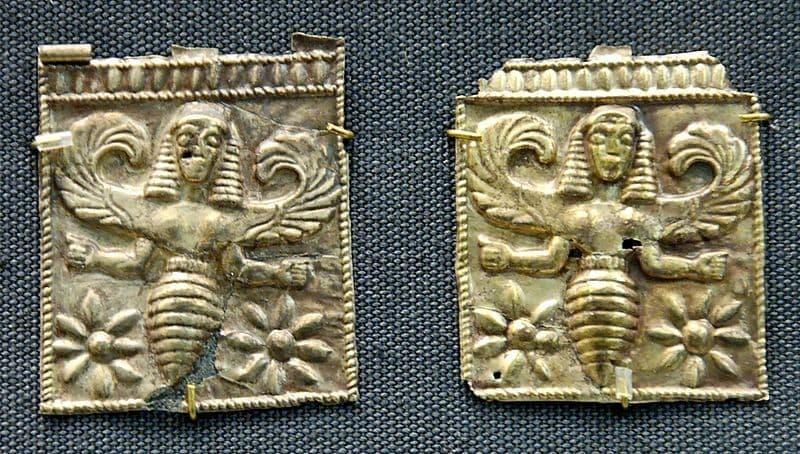
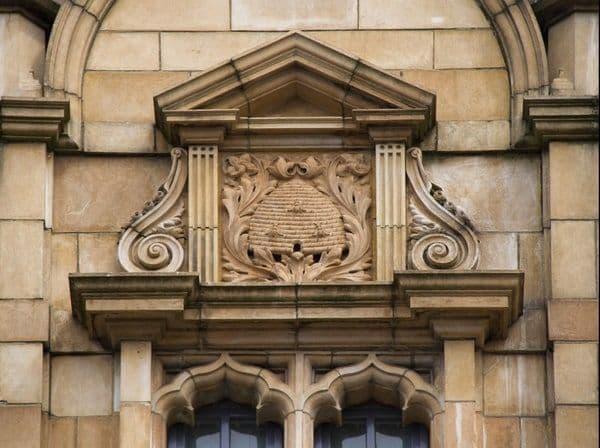
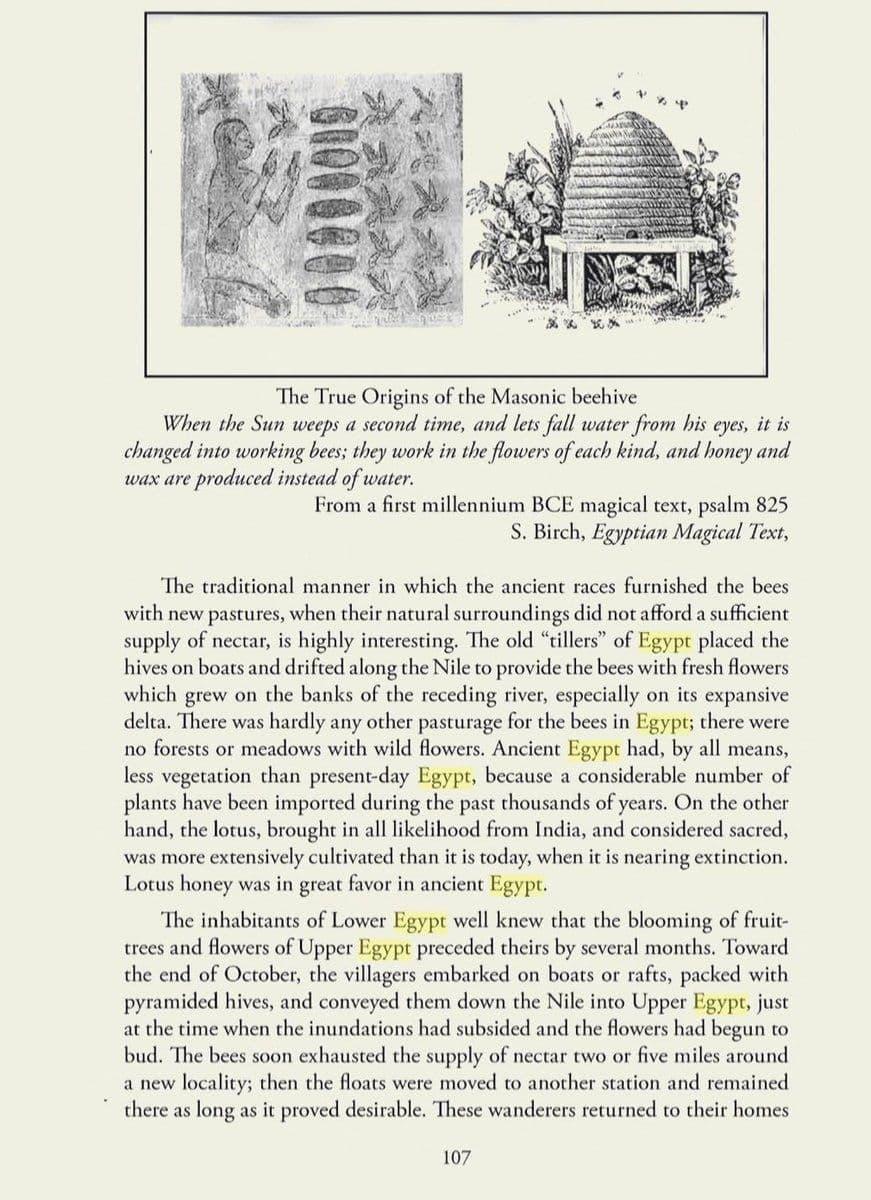
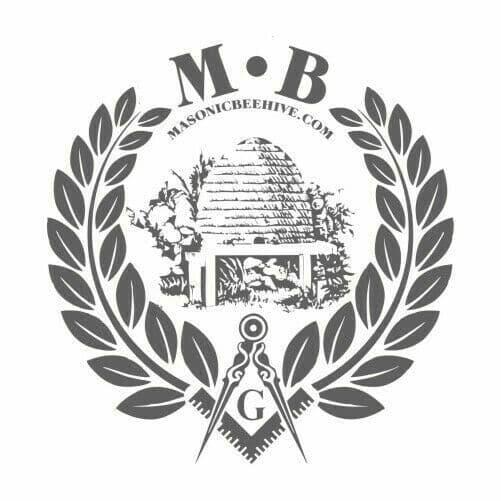

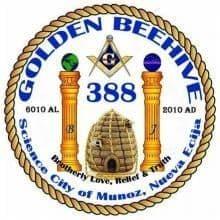
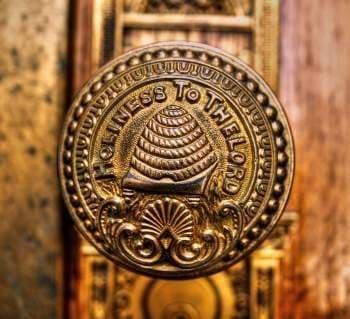
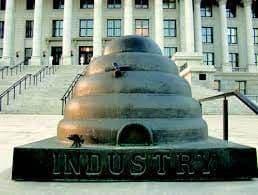
¤ Hive mind technology
¤ Human remote control
¤ Transfer of thoughts or impulses
¤ Cell programming
¤ Remote DNA manipulation
¤ Activation of preprogrammed cells injected into human brains
¤ Erasure and modification of memory
Sound CRAZY enough for you? Well, the technology is here, and every piece of evidence we have points to this "covid" shot being the vehicle to introduce this into their herd of human cattle.
Do not take the first shot.
Video (2:19 minutes) : VIDEO LINK
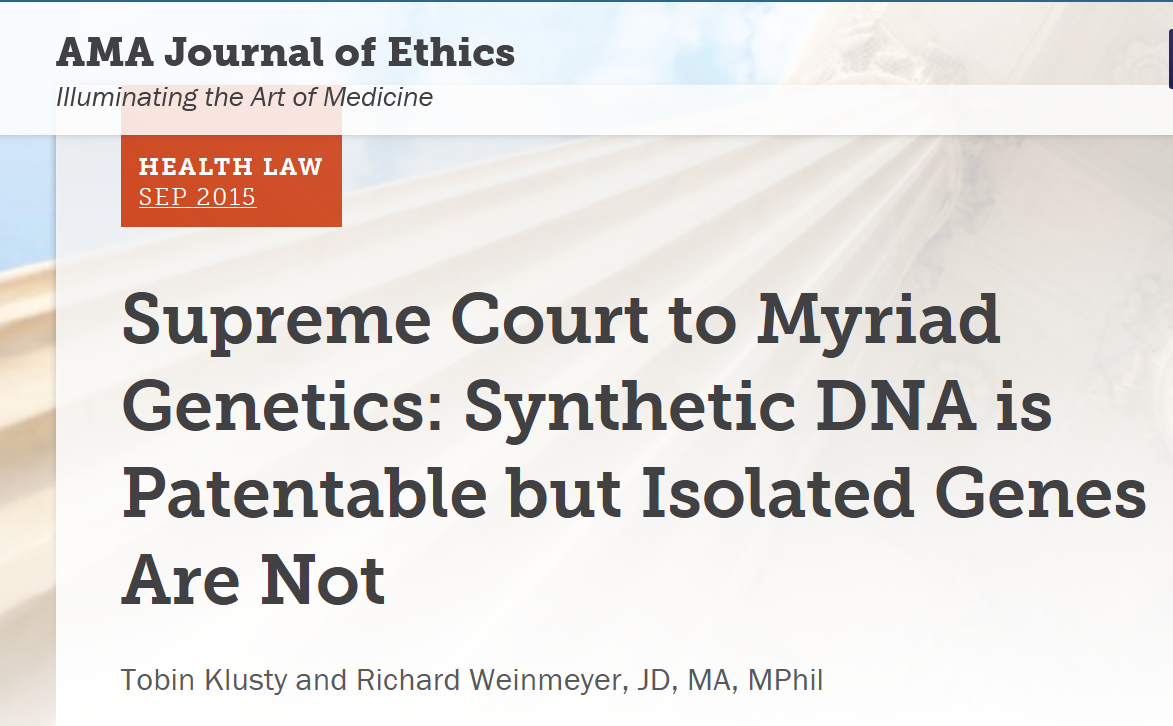
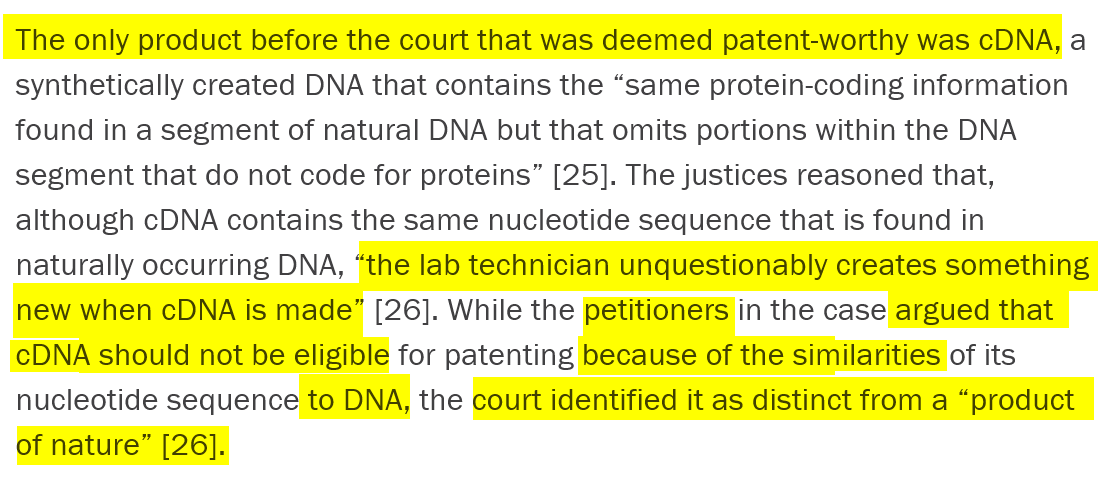
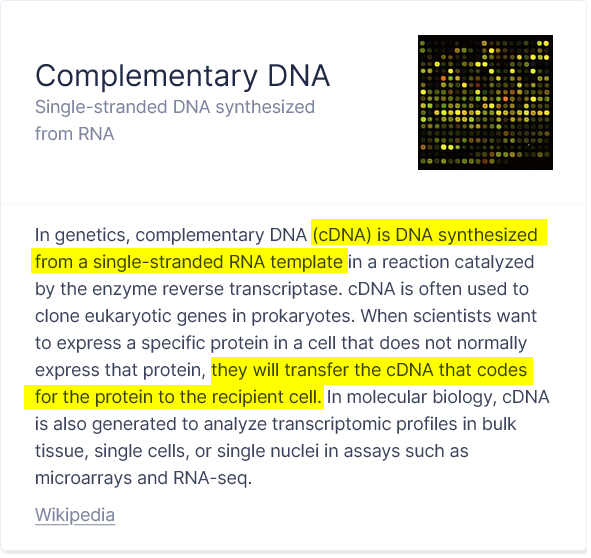
Synthetic DNA is Patentable: https://archive.ph/zayrX
Supreme Court Article on DNA: www.supremecourt.gov/opinions/12pdf/12-398_1b7d.pdf
NANO BOTS IN COVID SHOTS: ARTICLE HERE
The Lost Symbols of Freemasonry: Symbolic Imperfections:
Every American Freemason will be acquainted with the Perfect Ashlar, a Masonic symbol found in the Preston-Webb ritual. Most Masons believe that this ritual is the original used by the fraternity all the way back to 1717, when in fact it was created by Thomas Smith Webb in 1797. Another example of an American innovation to Freemasonry is the virgin weeping over the broken column. This symbol was invented by Jeremy Ladd Cross, and first propagated in his book The True Masonic Chart: Or Hieroglyphic Monitor; Containing All the Emblems Explained in the Degrees .
According to James Fenton, Past Grand Secretary of the Grand Lodge of Michigan: “Brother Webb, a printer, got into touch with Freemasonry quite early. In 1797 he attracted attention through a book titled “Freemason’s Monitor or Illustrations of Masonry”. In 1813 he became Grand Master of the Grand Lodge of Rhode Island. He is the real founder of the so-called American Ritus which he developed in that form like it is cultivated in America even today.” (circa 1865)
Bro. Webb was a printer, not a scholar, and he was far removed from the original source documents of Freemasonry in England when he conceived and printed his book. The American relationship with the Grand Lodges in England was still stressed due to the recent revolution and formation of the United States. Making matters worse, American Freemasonry, like its British counterpart, was then divided into two factions: ‘Modern’ and ‘Antient’. The schism between the Modern and Antient Grand Lodges in England would not be resolved until 1813. The significant philosophical differences between the two distinct groups created confusion among the Freemasons of the day. Central to the conflict was the Royal Arch degree used by the Antient lodges. With so many different ideas about Freemasonry floating around it is not surprising that Bro. Webb would try to create a new system, adopting parts of one system and grafting them onto the other.
It is also clear that he took certain liberties with the rituals and symbols in his interpretive book. In some cases he totally ignored significant symbols, and entire parts of the old ritual, while at the same time adding new material from unknown sources.
It can’t be ignored that part of Webb’s motive in creating the book was profit. Much like James Anderson before him, he intended to sell his book for financial gain. Another motive might have been to consolidate the American ritual into a framework that was easily accessible to all of the lodges, both Modern and Antient. Being able to sell his new book to both groups would have added to the profitability of his work. This could help explain why his book appears to be a synthesis of both Modern and Antient materials.
Like many Americans of his time, Webb was influenced by a misunderstanding of the origins of the Craft. Rev. James Anderson, in his Constitutions of 1723, had created a mythical history of the fraternity going back to the time of the biblical Adam. Many Freemasons of the time took this to be a real accounting of the history of Freemasonry. He was probably also confused by much of the terminology used in the rituals. For instance, it is likely that he would have viewed the old Masonic symbol of the Sword of State as being a direct allusion to the power and authority of the English crown. This probably explains why he left it out of his book.
In attempting to create a unified system that was devoid of British symbols of authority Webb made changes to the Masonic rituals that would have disastrous moral and philosophical consequences. The system his book creates is in opposition to both western and eastern metaphysical and moral traditions. This is a significant imperfection in the Preston-Webb rituals.
The original philosophical system of speculative Freemasonry, created in seventeenth century England, was a reinterpretation of long established Judeo-Christian ideology. The significant difference being that it could be universally adopted by all people because it was devoid of any particular dogma. It used Masonic symbols to create a system of human morality that could be agreed upon by all men. It did so in the hopes of achieving a brotherhood of all mankind, undivided by the specifics of any religious dogma.
Webb, however, creates an entirely new dogma through his misinterpretation of, and deviation from, the original system.
The Sword of State and the Royal Arch
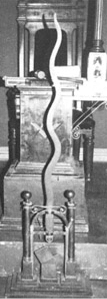 The Moderns railed against the creation of the Royal Arch degree of the Antients, yet they too were familiar with this symbol.
The Moderns railed against the creation of the Royal Arch degree of the Antients, yet they too were familiar with this symbol.
Why was there so much bitterness and heated rhetoric over the Royal Arch?
The Moderns knew the Royal Arch as the holder of the Sword of State that sat in the East with the Master of the lodge. It was a small stand into which the handle of the Sword of State was placed, holding it in an upright position. Imagine the present Royal Arch with a sword pointing upwards, coming out of the capstone. It was literally the “Royal Arch” because it held the Sword of State. The idea of Freemasonry being the “Royal Art” is derived directly from this.
While the Sword of State is more or less lost to English Freemasonry, it has been in continuous use in the Modern Rite Lodges in France since the early 18th century to this day. French Freemasonry, unlike that in England, did not experience a union of the ‘Modern’ and ‘Antient’ forms of the Craft. The Modern Rite remains the prevailing system in the Grand Orient of France, which is the oldest continuously operating Grand Lodge in the world. The United Grand Lodge of England was not formed until 1813.
The Sword of State should not be confused with the Tyler’s Sword. The Sword of State is a flamberge , while the Tyler’s Sword is usually depicted as a sabre .
As is discussed in my paper Freemasonry: Veiled and Illustrated, Freemasonry’s meaning is veiled in its allegory but revealed in its symbols. Thus, the terms “Sword of State” and “Royal Arch” are veils that cover the true meaning of the symbols. The arch is the gateway to Eden (human paradise), and the sword is that which the Bible says guarded the gateway after the fall of man into the delusion of duality (represented by the black and white tiled floor).
The Moderns were upset because the Antients reinterpreted the symbol of the arch in the context of the vaults beneath Solomon’s Temple. They knew this was an error because the legend of Hiram and the Temple had been recently created by John T. Desaguliers in 1725, but the symbol of the arch and sword predated this.
This information was either unknown to Webb, or he was reckless in his re-engineering of the rituals.
The Broached Thurnel and the Apron
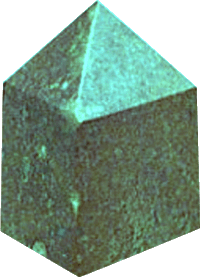 Both Webb and William Preston appear to have been familiar with the Broached Thurnel as an original symbol of the Craft. They also seemed to realize its importance, but were flummoxed by its vague definition in the rituals. Regarding the Broached Thurnel, the original ritual states ” …the Broached Thurnel [was] for the entered Apprentice to learn to work upon.” They must also have known that this symbol was associated with the Northeast corner of the lodge, and that it was a white stone formed by placing a pyramid composed of equilateral triangles atop a cube. From this they incorrectly concluded that the Broached Thurnel was a symbol specific to Entered Apprentices. They then removed the symbol and replaced it with the present Entered Apprentice apron with the flap turned up, making the newly created Apprentice a living symbol of the Broached Thurnel.
Both Webb and William Preston appear to have been familiar with the Broached Thurnel as an original symbol of the Craft. They also seemed to realize its importance, but were flummoxed by its vague definition in the rituals. Regarding the Broached Thurnel, the original ritual states ” …the Broached Thurnel [was] for the entered Apprentice to learn to work upon.” They must also have known that this symbol was associated with the Northeast corner of the lodge, and that it was a white stone formed by placing a pyramid composed of equilateral triangles atop a cube. From this they incorrectly concluded that the Broached Thurnel was a symbol specific to Entered Apprentices. They then removed the symbol and replaced it with the present Entered Apprentice apron with the flap turned up, making the newly created Apprentice a living symbol of the Broached Thurnel.
The true meaning and use of the Broached Thurnel is discussed in my paper Freemasonry: A Peculiar System of Morality .
The Perpendicular and Rough Ashlars
In the earliest rituals we are presented with three symbolic stones: the Perpendicular Ashlar, Rough Ashlar and Broached Thurnel. There is no mention of a “Perfect Ashlar.” As has been pointed out by myself and other Masonic scholars, it appears that what the old rituals called the “Perpend Ashlar” (Perpendicular Ashlar) got converted by brothers Preston and Webb into the Perfect Ashlar many Masons know today. It can now be shown that their transliteration of the old English “Perpend” into “Perfect” was incorrect. The old rituals state quite clearly that the Perpendicular Ashlar is symbolic of a gravestone sitting atop a green divot (sod).
The Rough Ashlar and Broached Thurnel are listed among the three immovable jewels: “Tarsel Board, Rough Ashlar, and Broached Thurnel.”
What is the purpose of the Rough Ashlar? According to the old rituals:
…the Rough Ashlar for the Fellow-Craft to try their Jewels upon…
They are to “try” their jewels upon the Rough Ashlar. Note that it does not say chip away or perfect, but to “try” their jewels upon it. This is significant because the Rough Ashlar is a symbol from antiquity that is also referred to as the “Uncut Block”. Also worth noting is this passage from the Bible.
And if thou wilt make me an altar of stone, thou shalt not build it of hewn stone: for if thou lift up thy tool upon it, thou hast polluted it. – Exodus 20:25
When a child is born, it is in a purely natural state of being (Rough Ashlar), having never been subjected to the “vices and superfluities of life.” The vices and superfluities are actions we take that lead us further away from that pure and natural state of being that we were born into. Thus, the original ritual does not seek to perfect us through the use of the working tools, but to restore us to our natural state of being.
The Fellow-Crafts, by trying their jewels upon the Rough Ashlar, symbolically learn how to recognize their natural state of being. Human beings are not meant to be Square, Level or Plum, they are living and changing at all times.
The original Natural Philosophy of Freemasonry had no need for, or use of, the Perfect Ashlar. It viewed the whole of the creation as already perfect in its natural state as created by the Great Architect of the Universe. The whole idea introduced by Preston and Webb that through the use of Masonic working tools a person can “Perfect” their Ashlar, is an affront to the deity. It is like saying, “Freemasonry can Perfect upon the Imperfect creation of the Great Architect.” This represents the ultimate hubris, and the results of such a false and specious philosophy are readily apparent in the Craft today. ‘Perfect Ashlar Masonry’ requires strict and immutable rules and structure in order to exemplify its “perfection”. These, however, defy the natural order of the creation which is entirely dynamic. Ask any physicist and they will tell you that it is the nature of all things to be in a constant state of change, nothing is static, and exact and perfect knowledge of even elementary particles such as electrons exists only as a probability. Thus, anything that remains static in a changing environment will be swept away by natural forces and replaced by something of equal dynamics to the environment in which it exists.
The creation is such that everything has its use and place. Nothing is imperfect by design, but is perfectly suited to perform its function within the whole of the creation. Our tendency to objectify reality into separate parts has given us the false illusion that the creation is the sum of its parts when, in fact, the parts are just different perspectives of the One. The whole of the creation is unified from beginning to end, no part exists independent of another. In the words of physicist Werner Heisenberg –
[In modern physics], one has now divided the world not into different groups of objects but into different groups of connections … What can be distinguished is the kind of connection which is primarily important in a certain phenomenon … The world thus appears as a complicated tissue of events, in which connections of different kinds alternate or overlap or combine and thereby determine the texture of the whole.
Oaths and Obligations
The present oaths and obligations used in the Preston-Webb rituals share little in common with the originals taken by men like George Washington and Benjamin Franklin. About all that remains of the original oath and obligation is the symbolic penalties.
No Mason prior to the Preston-Webb ritual was required to swear blind obedience to the edicts and dictates of a Grand Lodge or Grand Master. Freemasonry was a society of free men working together for the benefit of mankind. Their oath and obligation was to secrecy and moral rectitude.
Can you imagine the Founding Fathers of the United States swearing blind obedience to any person or organization?
We hold these truths to be self-evident, that all men are created equal, that they are endowed by their Creator with certain unalienable Rights, that among these are Life, Liberty and the pursuit of Happiness. – The Declaration of Independence
The Preston-Webb oaths and obligations lead to a fascist-like blind obedience to the will of others. It obligates the Mason to intellectual and spiritual slavery. The true nature of this would become apparent during the Morgan Affair of 1826. Unfortunately, Freemasons learned little from this and continued down the same path, ignoring, or choosing to forget their glorious heritage of freedom and enlightenment.
The ramifications of the changes made by Preston and Webb are everywhere apparent today. Freemasonry is now often referred to as an “obedience”. If Freemasonry were an obedience then what particular religion does it serve? What is the dogma of this religion?
OBEDIENCE: The general submission which the religious vow to God, and voluntarily promise to their superiors, in order to be directed by them in the ways of perfection according to the purpose and constitutions of their Order. It consists, according to Lessius (De Justitia, II, xlvi, 37), in a man’s allowing himself to be governed throughout his life by another for the sake of God.
Does the above sound like a definition of Freemasonry that would have been understood by Voltaire, Franklin or Washington?
James Anderson states the following in his Constitutions of 1723:
But though in ancient times Masons were charged in every country to be of the religion of that country or nation, whatever it was, yet it is now thought more expedient only to oblige them to that religion in which all men agree, leaving their particular Opinions to themselves: that is, to be Good men and True, or Men of Honour and Honesty, by whatever Denomination or Persuasion they may be distinguished; whereby Masonry becomes the Centre of Union and the Means of conciliating true Friendship among persons that must have remained at a perpetual distance.
Anderson points to the “religion in which all men agree” and then goes on to define this religion as “to be Good men and True, or Men of Honour and Honesty, by whatever Persuasion they may be distinguished.” He even tells us why this simple definition is important to Freemasonry: “whereby Masonry becomes the Centre of Union and the Means of conciliating true Friendship among persons that must have remained at a perpetual distance.”
Anderson abolishes dogma and obedience in 1723 then Preston and Webb restore it seventy years later.
Any Masonic obligation that goes further than having the person agree to be good, true, honest, honorable and loyal in his friendship and actions towards others is a violation of Anderson’s Constitutions of 1723. I would add that it also violates the Ancient Landmarks of the Craft.
Conclusion
William Preston and Thomas Webb most likely acted with the best of intentions when they modified the Masonic rituals. They may have thought that they were helping to unite Freemasons, or merely clarifying the content of the rituals. Sadly, neither Preston nor Webb had a thorough understanding of the original system. This was in large part due to it having been an oral tradition that over time became more corrupted through repetition and misunderstanding.
Modern scholarship is beginning to shed light on the original system through researching the old letters, diaries, and other MS materials available. Much work is yet to be done. It is my hope that one day Freemasonry will be restored to its original form, and a new age of Enlightenment and brotherhood will dawn for future generations of Masons.

